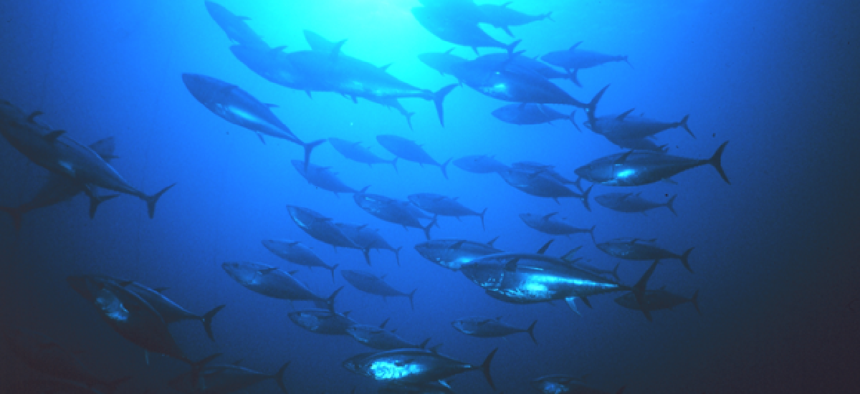'Fishal recognition' for better fisheries management


Connecting state and local government leaders
Researchers are getting more accurate counts of marine life by using underwater cameras and facial recognition techniques to measure fish populations.
To monitor fish stocks in about 3 million square miles of ocean including the North Pacific Ocean and East Bering Sea, the Alaska Fisheries Science Center turned to facial recognition technology -- or more accurately, “fishal recognition.”
Part of the National Oceanic and Atmospheric Administration’s National Marine Fisheries Service, the center is working to get more accurate counts of marine life by applying the same facial recognition techniques that identify people to recognize fish according to their facial features underwater.
The agency began experimenting with this technology several years ago and is now on its second generation of camera-based trawl, or CAM-Trawl. It has worked with ADL Embedded Solutions on hardware improvements, such as small form factor embedded Vision Boxes -- the image acquisition computers -- a Quad-Core Intel Core i7 processor to enable real-time processing of image data and waterproof enclosures and connectors.
Before using CAM-Trawl, the traditional method of measuring fish stocks had been to use trawlers to scoop up all the fish in a particular region of the ocean, bring them on deck, count them and then multiply that number out, according to said JC Ramirez, director of engineering at ADL. “If you did 10 square miles, multiply that by 10 for 100,” for example, he said.
But that method had several shortcomings, including extrapolation errors, high costs and ecological impacts on fish populations.
“They were looking for not only a more benign way to do that, but also perhaps a way that would allow them to cover more regions and get a little bit more specificity on the variations in the data from area to area,” Ramirez said.
Now researchers can pull a rig outfitted with the cameras that are linked back to ADL’s control computer, which typically resides in the wheelhouse. It monitors external sensors such as location, time, pressure sensors and radio frequency identification tag readings. It then, based on sensor input, communicates with one or more Vision Boxes to do the image capture, managing the remote on/off power, clock syncing, and starting and stopping of image collection.
“Not only is it doing the image capture at a very high resolution and at a very high frame-per-second rate, but it also needs to take care of doing some of the facial recognition algorithms to identify that particular fish species and store that data somewhere on that Vision computer,” Ramirez said.
The scientists bring the Vision Boxes back to the center for data analysis. "On a trawler-by-trawler basis, they’re downloading all the captured data" into a larger system that creates "a bigger overall picture of what’s going on together,” Ramirez said. For instance, they can see if a population of fish has grown, decreased or migrated to another area.
NOAA officials were unavailable to comment at press time, but three scientists at the Alaska center said in a 2015 report that “development of new camera-based systems, methods, and tools is critical for collecting scientific data to inform management.”
The report listed some of the benefits of using electronic monitoring:
- Lower post-processing and storage costs because only images of individual catch events are stored and reviewed.
- Better real-time reporting and lower lag times.
- Greater accuracy because images are linked to GPS information.
Still, officials hesitate to call this methodology foolproof. Image quality is a main concern. “Poor image quality not only makes it difficult to consistently identify catch it also makes it very challenging if not impossible to automate fish measurement and species identification,” according to the report, “Innovative Camera Applications for Electronic Monitoring.”




